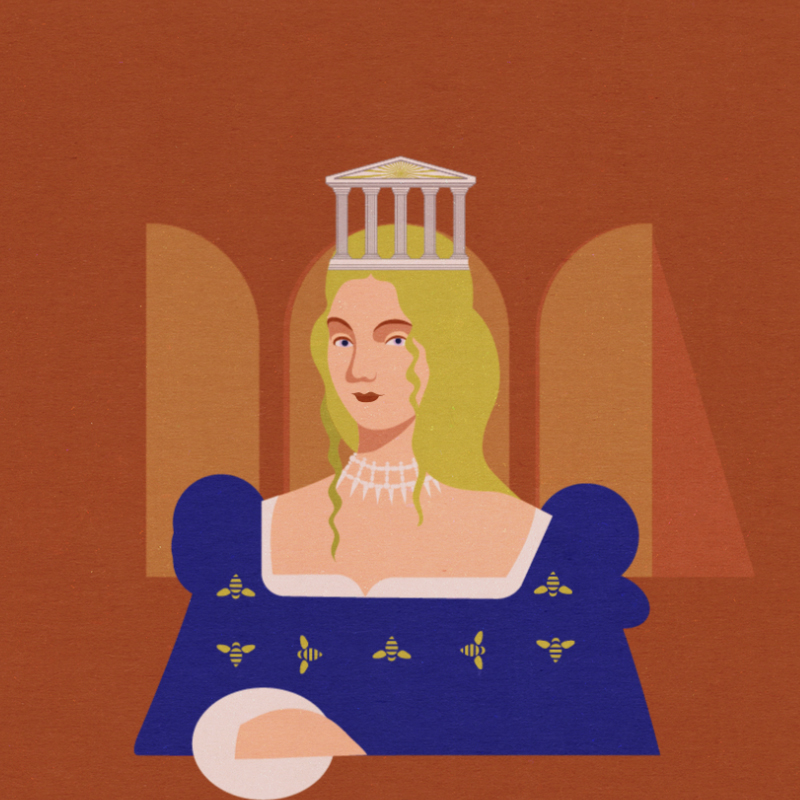The Most Famous Italian in the Grand Duchy of Lithuania
> BACK TO 100 STORIESIt’s hard to avoid disagreements when discussing the famous people from the past. Depending on your point of view, someone could be either a brave warrior or a ruthless barbarian who robbed foreign lands. Historians still argue over whether the Egyptian queen Cleopatra was beautiful or not. And Homer, the poet of antiquity, didn’t exist at all according to literary scholars. This happens because there are many things we don’t know about the lives of people from the past and the same facts are interpreted and evaluated differently in different documents and chronicles.
There is also a disagreement about the most famous Italian in the Grand Duchy of Lithuania (GDL), the Queen of Poland and Grand Duchess of Lithuania, Bona Sforza (1494–1557). Some think that this woman was a wise ruler and patron of Renaissance culture, while others blame her for political intrigues and even for the murder of Barbora Radvilaitė, the wife of her son Sigismund II Augustus. It is unlikely that anyone knows the whole truth: sixteenth century palaces were full of refined manners, arts and sciences, but also political intrigue. However, the most important facts suggest that Bona Sforza was a well educated and intelligent ruler.
Bona was born to a family of Italian nobles. She lost her father quite early. Although she had brothers and sisters, she was the only one who survived to adulthood – child mortality was very high even in noble families until the nineteenth century. As Bona remained a single child, she was educated as a future ruler. She was surrounded by artists and intellectuals from her early days. She knew Latin and Greek, and studied law, economy and geography.
A portrait of Bona in her later years can be found in the GDL history books, where she is portrayed as a rigorous woman wearing a white headscarf. But other portraits testify that she was angelically beautiful in her youth: blond hair, bright skin, well defined eyelashes and eyebrows.
She married Sigismund I the Old, the Grand Duke of Lithuania, when she was twenty four. He was fifty one at the time – like most of the noble marriages, this one was arranged on the basis of political interests. Still, the marriage was successful: Bona gave birth to four children – their eldest son Sigismund II Augustus became the King of Poland and the Grand Duke of Lithuania in 1544. Bona cleverly managed her estates and carried out significant economic reforms. She often exercised her influence in the allocation of important positions, which is why she was disliked by local nobles. She renovated Vilnius Lower Castle and invited artists, doctors, and lawyers from Italy and other countries to the palaces. Thanks to her, Italian clothing and kitchen trends flourished in the Grand Duchy of Lithuania: the women of the nobility began to wear dresses with low-cut necklines, and the palace chefs began to use olive oil, nutmeg and saffron in their cooking. Eating manners also changed – forks and glazed plates appeared on tables, and beer was replaced by wine.
When her son Sigismund II Augustus succeeded to the throne, her political influence started to weaken. Also, the queen mother didn’t get along with Sigismund’s wife Barbora Radvilaitė. Bona returned to Italy in 1556 because she didn’t want to be the “second” lady of the kingdom. Unfortunately, she died only a year later – it is presumed that she was poisoned and her will was forged.

